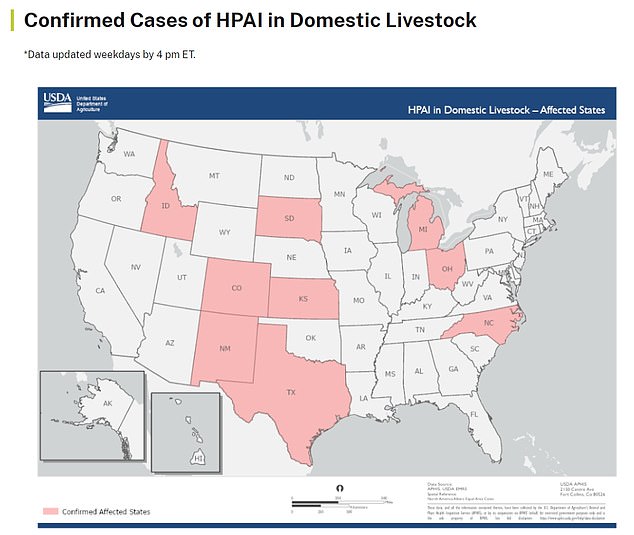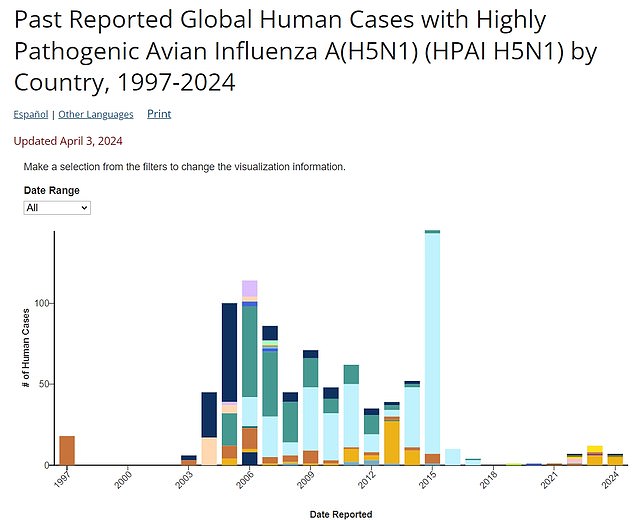Experts have warned that human transmission of bird flu may be much more widespread than previously thought, as farmers in Texas and Wisconsin are They are reported to have symptoms of the virus but are avoiding testing.
Dr. Barb Petersen, a dairy veterinarian in Amarillo, Texas, explained that workers at a local farm where cattle tested positive for the virus are suffering telltale symptoms.
She said: “People had some classic flu-like symptoms such as high fever, night sweats, chills, lower back pain” as well as upset stomach, vomiting and diarrhoea.
They also tended to have “pretty severe conjunctivitis and swelling of the eyelids.”
The USDA revealed that it was collecting ground beef samples from grocery stores in states with outbreaks, which will then be tested for the virus (stock).

The map above shows states with infected cattle. Cases of the virus have been reported in a total of 34 herds.

The graph above shows human cases of avian influenza reported globally by year. The colors represent different countries, with light blue being Egypt and orange being Cambodia.
Meanwhile, veterinary researchers in Wisconsin, where the virus has infected cows, have reported multiple cases of local farmers suffering from bird flu-like symptoms.
But farmers are notoriously reluctant to seek medical help, meaning “many cases are undocumented,” according to Dr. Keith Poulsen, director of the Wisconsin Veterinary Diagnostic Laboratory.
To date, only one person has tested positive for the virus: a Texas farmer who suffered from eye inflammation.
But the CDC says at least 44 others are under surveillance for possible infections with the H5N1 bird flu virus.
It comes as the USDA announces plans to test samples of beef taken from slaughterhouses for livestock not used for human consumption.
They will also conduct studies on whether cooking beef to the recommended internal temperature of 145°F (62°C) kills the bird flu virus.
No tests so far have shown bird flu inside animal tissues, but last week the USDA said it had detected the virus in the lungs of cattle.
Tests last week on supermarket milk by officials suggested one in five products contains the virus.
However, authorities insisted this posed no risk to humans and said pasteurization had “deactivated” the virus.
A total of 34 dairy herds in nine states, many of them in Texas, have tested positive for the disease so far.
Dr. Keith Poulsen, director of the Wisconsin Veterinary Diagnostic Laboratory, said NBC News who had heard reports of people with the infection.
He added that farmers are not cooperating with demands for testing in part because of their long work hours and fear of being asked to cull their flocks, as poultry farmers do with their flocks.
It comes amid concerns that eight people in India may also be infected with bird flu.
The two doctors and six poultry farm workers were exposed to birds that had H5N1, officials said, and are being tested for the virus.
The local administrative office in Ranchi, eastern India, also opened its own “bird flu room” to keep people in quarantine.
Almost 2,000 chickens in the area were also slaughtered after the infections were confirmed.


